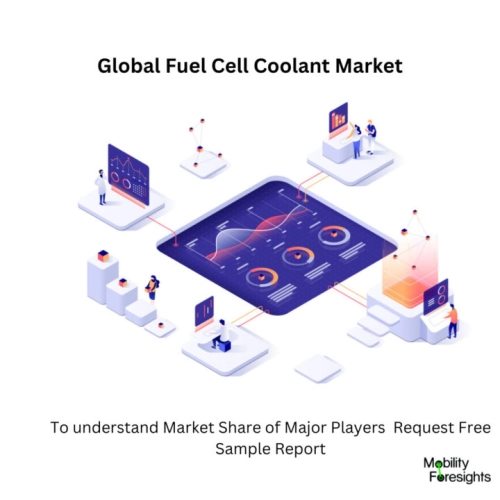
- Get in Touch with Us

Last Updated: Apr 25, 2025 | Study Period: 2024-2030
Among the options for alternative propulsion, fuel cell-powered engines rank alongside hybrid, battery, and alternative fuel engines.
Mostly buses, lorries, vans, and some passenger cars will be equipped with fuel cells.
Aerial vehicle propulsion is being developed based on this technology, and certain off-road applications, including maritime and stationary equipment, are considering the use of fuel cells as well.
Low maintenance intervals are essential for applications involving fuel cells.
The coolant life duration serves to characterize these. The rise in electrical conductivity has an impact on this in turn. Another important factor is the ion exchanger's lifetime.
The ion exchanger "filters out" all corrosion and foreign ions that might be released during operation in order to keep the coolant below a critical electrical conductivity level.
A coolant that prevents corrosion will lengthen the ion exchanger's lifespan and greatly reduce the frequency of maintenance.
The fuel cell coolant was created to reduce the heat generated by vehicle exhaust stacks. Do not use engine coolant or any other type of coolant; only use this one for FCEV.
Amazingly low electrical conductivity achieved by using non-ion inhibitors, which provide excellent metal part protection.
The Fuel Cell Coolant Market is anticipated to expand at a healthy rate. A competitive and diverse market is the result of the ecosystem's inclusion of important participants.

TheGlobal Fuel cell coolant marketaccounted for $XX Billion in 2023 and is anticipated to reach $XX Billion by 2030, registering a CAGR of XX% from 2024 to 2030.
ATECO is excited to announce the release of a new coolant called Free cur EV Micro 10, which was created specifically to meet the needs of electric propulsion using hydrogen fuel cells.
This brand-new, low-conductive coolant was created to effectively cool a vehicle's fuel cell stack while also extending the life of the coolant and ion exchanger.
One option for alternative propulsion is fuel cell-powered engines, which can also be used in hybrid power systems, batteries, and other fuels.
| Sl no | Topic |
| 1 | Market Segmentation |
| 2 | Scope of the report |
| 3 | Abbreviations |
| 4 | Research Methodology |
| 5 | Executive Summary |
| 6 | Introduction |
| 7 | Insights from Industry stakeholders |
| 8 | Cost breakdown of Product by sub-components and average profit margin |
| 9 | Disruptive innovation in the Industry |
| 10 | Technology trends in the Industry |
| 11 | Consumer trends in the industry |
| 12 | Recent Production Milestones |
| 13 | Component Manufacturing in US, EU and China |
| 14 | COVID-19 impact on overall market |
| 15 | COVID-19 impact on Production of components |
| 16 | COVID-19 impact on Point of sale |
| 17 | Market Segmentation, Dynamics and Forecast by Geography, 2024-2030 |
| 18 | Market Segmentation, Dynamics and Forecast by Product Type, 2024-2030 |
| 19 | Market Segmentation, Dynamics and Forecast by Application, 2024-2030 |
| 20 | Market Segmentation, Dynamics and Forecast by End use, 2024-2030 |
| 21 | Product installation rate by OEM, 2023 |
| 22 | Incline/Decline in Average B-2-B selling price in past 5 years |
| 23 | Competition from substitute products |
| 24 | Gross margin and average profitability of suppliers |
| 25 | New product development in past 12 months |
| 26 | M&A in past 12 months |
| 27 | Growth strategy of leading players |
| 28 | Market share of vendors, 2023 |
| 29 | Company Profiles |
| 30 | Unmet needs and opportunity for new suppliers |
| 31 | Conclusion |
| 32 | Appendix |